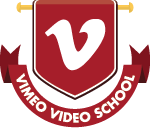Like that zombie stampede from your VHS copy of 'Undead Unicorn Apocalypse,' Halloween is just around the corner. If you're like us, then you're putting together a killer costume, curling up on a couch watching 'Undead Unicorn Apocalypse 2: The Galloping,' and getting in the Halloween spirit with our Video School Lesson on
Scary Special Effects!
But you might be wondering, what else goes into that horror classic that makes it so scary? It's not just blood and guts and monsters, right? Look no further! Here are some tried-and-true techniques you can use for shooting your next horror classic that are so easy to do that...it's scary.
Get your story straight
Whether you plan to scare your audience with ghosts, ghouls or goblins, aliens from another
planet or good old fashioned zombies, you still need a story to get started.
Storyboarding isn’t
just for pros. Think about all your scenes and sketch or write them out. This will allow you to
organize your
shot list and know exactly what you’re going to shoot when the camera starts
rolling. Take a look at
Christoph Horch's sequence animatic depicting Edgar Allan Poe's 'The Narrative of Arthur Gordon Pym.'
Although the sequence is not a storyboard for a live-action film per se, we get a sense of the story and pacing through the frame composition and the way the animation imitates camera movements. Aside from drawing arrows indicating motion, storyboard artists often animate their sequences to convey action and camera movement for reference. This is very handy for visualizing and pacing your story, especially scary stories that wait for the right moment to go...BOO!
Continue Reading…












